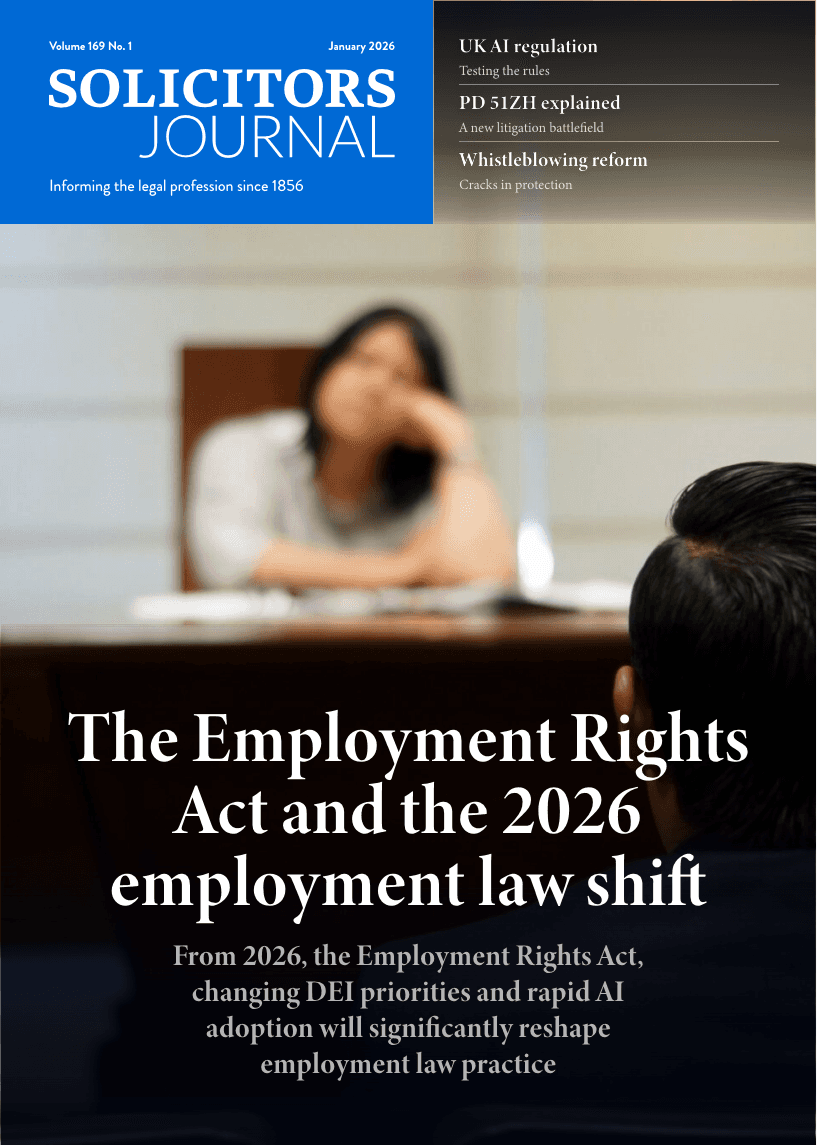Crypto-wallet freezing orders: promise and limits

By Nick Barnard
Almost two years on, the UK’s Crypto-Wallet Freezing Orders reveal both their potential and stark limitations in practice.
Almost two years after entering the statute books and over a year after coming into force, Crypto-Wallet Freezing Orders (CWFOs) have finally made headlines – or at least one headline. On 18 July 2025, the SFO announced that it had frozen cryptoassets valued at just over £11,000 belonging to a suspect in its ongoing investigation into collapsed broadcast company Arena TV Limited.
Bearing in mind that Arena TV was reportedly some £280m in debt at the time of going into administration in November 2021, it may seem incongruous that the freezing (not even seizing) of a barely five-figure sum almost four years later was considered newsworthy.
While it is correct that this is the first publicised use of the (relatively) new powers by any UK law enforcement agency (LEA, to include all of the police, SFO, NCA, FCA and HMRC) what it really underlines is the limitations of the UK regime.
Legislative context
CWFOs were added to the powers contained within Part 5 of the Proceeds of Crime Act 2002 (POCA) by the Economic Crime & Corporate Transparency Act 2023 and intended to mimic the success of Account Freezing Orders (AFOs), as created by the Criminal Finances Act 2017. AFOs had expanded the POCA arsenal by putting bank accounts on the same footing as physical cash and enabling balances to be frozen by application to a Magistrates’ Court on a relatively low ‘suspicion’ basis.
As UK investigators grew more au fait with cryptoassets – and the means by which criminals obtained and used them – it became apparent that there was something missing from the POCA toolkit. Over the last decade or so, judges have been relatively swift to conclude that cryptoassets were property susceptible to their jurisdiction.
This in turn allowed cryptoassets to be included in Confiscation Orders and Civil Recovery Orders, as well as captured by pre-emptive Restraint Orders and Property Freezing Orders. However, that still left two problems. Firstly, although Restraint Orders and Property Freezing Orders can be obtained ex-parte, any subsequent proceedings are on notice to the subject, and inevitably take some months to conclude.
This meant there was ample opportunity for a determined party to put cryptoassets beyond reach. Secondly, even if the subject did not seek to dissipate the assets, nothing could be done if he or she refused to deliver them up. This is an important difference between cryptoassets and other forms of property. Banks will heed court orders to transfer funds. Cars and jewellery can be physically seized. Real property can be transferred even if the title holder refuses to cooperate.
However, cryptoassets are recorded on decentralized ledgers (blockchains) that respond only to the correct private key. No one person or entity controls the blockchain and it cannot be sued, physically seized or imprisoned for contempt. As such, the usual POCA tools for freezing and seizing were rendered useless.
This impotence was particularly galling given that whilst blockchains may be immutable, they are also generally transparent, in that the location and transaction history of every asset is visible to the world. Even where it was clear that cryptoassets held at a particular blockchain address were either themselves the proceeds of fraud or theft, or were being used to launder the proceeds of other crimes, there was no means by which they could be direct frozen or seized. With that in mind, CWFOs were designed to attack ill-gotten or misused crypto in its natural habitat.
Since April 2024, LEAs in England & Wales have been able to apply to Magistrates’ Courts for a CWFO, where they have reasonable grounds to suspect that cryptoassets held in a crypto-wallet administered by a UK-connected crypto service provider are either recoverable property (i.e. obtained from unlawful conduct) or intended for use in unlawful conduct:
‘Cryptoasset’ means a ‘cryptographically secured digital representation of value or contractual rights that uses a form of distributed ledger technology and can be transferred, stored or traded electronically’.
The definition encompasses both fungible (i.e. those which are equivalent to or easily exchanged for others, such as cryptocurrency ‘coins’ or ‘tokens’ – by far the most common form of cryptoasset) and non-fungible cryptoassets. Readers may recall the boom of non-fungible tokens (NFTs) – often used to record ownership of intangible property such as digital artwork – which peaked in 2021 and 2022 but has since waned.
‘Crypto-wallet’ means anything (whether software, hardware or any physical item, or a combination thereof) used to store the cryptographic private key that allows cryptoassets to be accessed.
A ‘crypto-service provider’ means either a ‘cryptoasset exchange provider’ (i.e. enabling cryptoassets to be exchanged for money or other cryptoassets) or a ‘custodian wallet provider’ (i.e. providing services to safekeep or administer cryptoassets or private keys). Readers made be familiar with services such as Coinbase, eToro and Gemini, which all provide platforms to buy, sell, custody and manage cryptoassets, similar to how investment management firms deal in shares and other investment products on behalf of clients.
‘UK-connected’ can be established by various routes; for example, if the crypto-service provider has its registered office or head office in the UK, or if it holds data relating to customers in the UK.
Balance of probabilities
If the court is subsequently satisfied on the civil balance of probabilities that the cryptoassets are recoverable property or intended for use in unlawful conduct, it may make a Crypto-Wallet Forfeiture Order requiring the crypto-service provider to transfer those assets to the relevant LEA.
Even those relatively unfamiliar with cryptoassets will spot the one obvious limitation of the CWFO regime namely that it is limited to crypto-service providers with a UK connection. One of the key features of cryptoassets (and indeed, one that makes them attractive to those seeking an alternative to mainstream financial services) is that they are not tied to or restricted from any particular jurisdiction. As such, there is nothing to prevent a person seeking to put their cryptoassets beyond the reach of a CWFO from simply transferring their bounty to a service provider with no UK connection.
Those more familiar with cryptoassets will also have identified another fundamental problem. For all their technical complexity, the practicalities of using cryptoassets are relatively straightforward. The blockchain is a ledger which records the location (‘address’) of each asset. Each address has a corresponding password or ‘private key’. If the correct private key is provided, the blockchain will transfer assets from one address to another.
The significance of this simplicity is that there is actually no need to use a crypto-service provider (in the UK or anywhere else) to manage cryptoassets. You need only be able to accurately and safely store your addresses and private keys, and accept the risk that if they are lost or compromised, then there is no means of recovering control. The consequence for LEAs is that CWFOs are completely ineffective against cryptoassets not under the control of a crypto-service provider, even if the private keys (or rather, the record of the private keys) are within the jurisdiction.
Limitations, effectiveness and outlook
As noted above, there has been limited spotlight on CWFOs since their introduction. No data has been published concerning the number of Orders obtained, or the amounts frozen or forfeited. The SFO is the only organisation to have made public any CWFO, and the sum involved,£11,000, is miniscule when compared to not only the Arena TV investigation, but the daily value of crypto transactions worldwide (measured in billions) and the amounts seized under other POCA powers (£243.3m in 2023/24). However, given the limitations of the regime described, this can be of no surprise. A determined fraudster or money-launderer with any understanding of the potential power of CWFOs likely won’t leave their assets exposed on a UK-connected crypto exchange or wallet for long.
This bleak assessment does not mean that there are no means where financial crime involving cryptoassets can be combatted by authorities in the UK and elsewhere. In our experience, the most common approach is not to target the assets ‘on-chain’, but to strike where they can be traced into ‘real world’ fiat currency. Alternatively, freezing at the service provider is not the only means of seizing control of cryptoassets. The CPS is currently custodying approximately 61,000 Bitcoin (worth over £5bn as of August 2025) alleged to be the proceeds of a huge investment fraud in China. Interestingly, those Bitcoin were not seized digitally but rather the private keys were found saved on laptops seized from the suspects. The CPS will no doubt be alert to the recent conviction of an ex-NCA officer imprisoned for stealing Bitcoin seized from a man convicted of running the ‘Silkroad 2.0’ online black market. The theft only came to light when the original offender asserted that part of his stash was missing, and that the person responsible could only be within the NCA.
In defence of CWFOs, their success should not only be judged by the number or value of Orders obtained. By comparison, it has taken eight years for the first prosecution for failure to prevent tax evasion by associated persons to commence since the introduction of that offence in 2017. However, the creation of the offence has nonetheless been credited with significantly increasing compliance standards in the UK tax industry.
Similarly, CWFOs have no doubt played a role in making the UK an unattractive place to misuse crypto. The expansion of the POCA regime is also an important contributor to the drive by successive Governments and the Financial Conduct Authority to bring cryptoassets into the mainstream regulatory fold. Whilst it will probably never be illegal to use non-UK crypto service providers – or to custody your own assets – it will increasingly raise questions as to why they are being kept out of the reach of the UK regulatory and POCA regimes.
In turn, this will make it increasingly difficult to deal with ‘offshore’ crypto, and persuade regulated entities to handle those assets or their fiat proceeds. It is unrealistic to think that the SFO’s recent success will trigger an avalanche of similar action, and the time it has taken to see the first CWFO in action underlines the limitations of the regime. However, this should not be interpreted to mean that the legislation is not fit for purpose and has not played its part in driving change for cryptoassets in the UK.
.png&w=3840&q=75)

